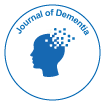Наша группа организует более 3000 глобальных конференций Ежегодные мероприятия в США, Европе и США. Азия при поддержке еще 1000 научных обществ и публикует более 700 Открытого доступа Журналы, в которых представлены более 50 000 выдающихся деятелей, авторитетных учёных, входящих в редколлегии.
Журналы открытого доступа набирают больше читателей и цитируемости
700 журналов и 15 000 000 читателей Каждый журнал получает более 25 000 читателей
Индексировано в
- Google Scholar
- ICMJE
Полезные ссылки
Журналы открытого доступа
Поделиться этой страницей
Абстрактный
Understanding Wernicke-Korsakoff Syndrome: A Comprehensive Exploration
Thomas Johan
Wernicke-Korsakoff syndrome (WKS) is a complex neuropsychiatric disorder resulting from thiamine (vitamin B1) deficiency, primarily associated with chronic alcohol misuse. This syndrome comprises two distinct phases: Wernicke’s encephalopathy, characterized by acute neurological symptoms, and Korsakoff’s syndrome, marked by persistent amnesia and cognitive deficits. Despite being preventable and treatable, WKS remains a significant clinical challenge due to underdiagnosis and delayed intervention. This review provides a comprehensive overview of the clinical presentation, etiology, pathophysiology, diagnostic criteria, and management strategies for Wernicke-Korsakoff syndrome. Understanding the multifaceted nature of this disorder is essential for healthcare professionals to enhance early recognition, intervention, and prevention. Wernicke-Korsakoff syndrome (WKS) is a neuropsychiatric disorder resulting from thiamine (vitamin B1) deficiency, often associated with chronic alcohol misuse. It manifests as a combination of acute Wernicke’s encephalopathy and chronic Korsakoff syndrome, leading to a range of cognitive and neurological impairments. Wernicke’s encephalopathy presents with acute symptoms such as confusion, ataxia, and oculomotor abnormalities, while Korsakoff syndrome is characterized by severe memory deficits and confabulation. Early recognition and prompt thiamine supplementation are crucial for preventing irreversible neurological damage. This paper provides an overview of the clinical features, etiology, diagnosis, and management of Wernicke-Korsakoff syndrome, highlighting the importance of a multidisciplinary approach in patient care.
Журналы по темам
- Биохимия
- Ветеринары
- Генетика и молекулярная биология
- Геология и науки о Земле
- Еда и питание
- Иммунология и микробиология
- Инженерное дело
- Клинические науки
- Материаловедение
- медицинские науки
- Науки об окружающей среде
- Общая наука
- Сельское хозяйство и аквакультура
- Социальные и политические науки
- Уход и здравоохранение
- Фармацевтические науки
- Физика
- Химия

 English
English  Spanish
Spanish  Chinese
Chinese  German
German  French
French  Japanese
Japanese  Portuguese
Portuguese  Hindi
Hindi